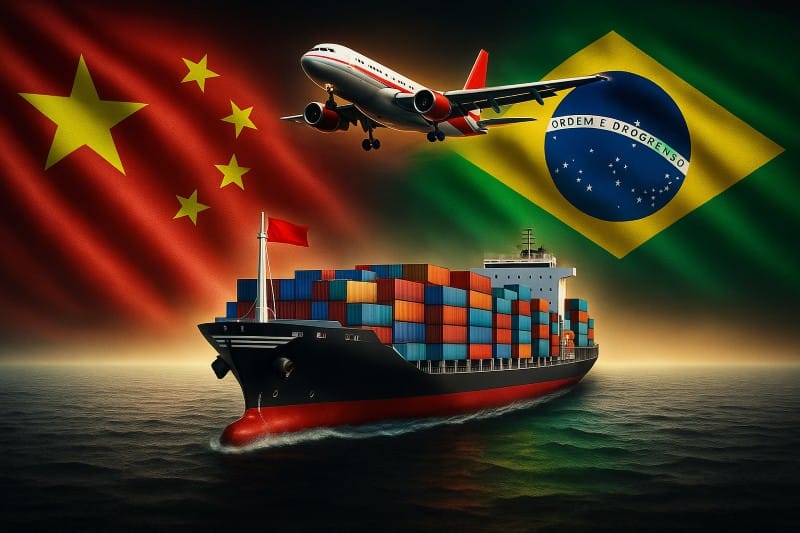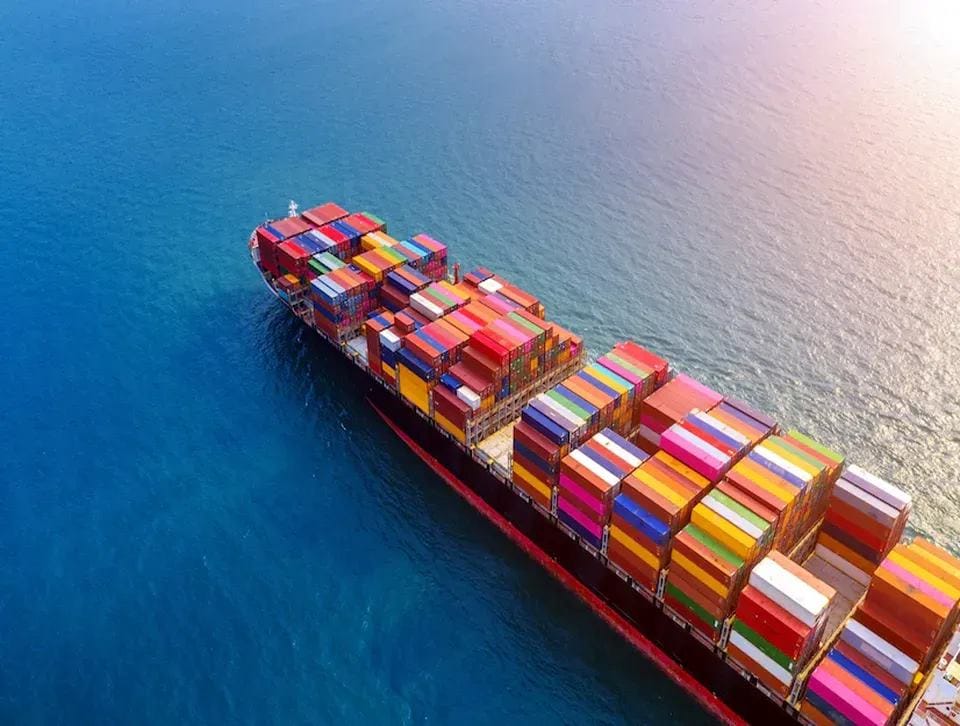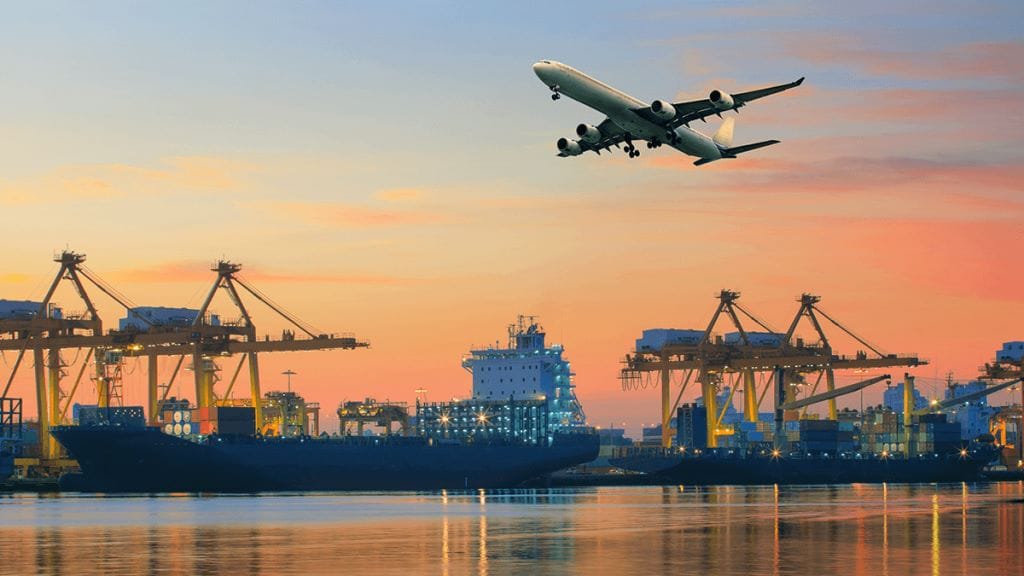With the deepening of economic and trade cooperation between China and Latin America, Brazil, as the largest economy in Latin America, has become one of the important destinations for China’s exports. This article will introduce the basic logistics situation between the two countries in detail.

Introduction to Brazil
Located in the eastern part of South America, Brazil is the largest and most populous country in Latin America. It borders Argentina, Peru, Uruguay and other countries. Choosing to transport goods from China to Brazil has multiple strategic advantages:
- Price advantage: Chinese-made products have a balance between quality and price and are internationally competitive.
- Rich products: From electronic products to mechanical equipment, from daily consumer goods to clothing and textiles, China is a full-range supply source.
- Supply chain maturity: After more than 20 years of development, the China-Brazil trade route has formed a highly specialized logistics network, and there are dense routes from major Chinese ports to Brazil.
How to Ship from China to Brazil
The distance between China and Brazil is far, about 17,000 kilometers, and the two main modes of transportation are sea and air. Choose the appropriate mode of transportation according to the different characteristics of the goods. The following are the characteristics of the modes of transport:
Sea Freight
Sea transport is the most commonly used mode of transport, suitable for bulk or heavy cargo transportation, low cost, suitable for large-scale exports, strong adaptability, capable of transporting various types of goods from bulk cargo to special cargo, stable routes, suitable for long-term cooperation and bulk trade, and can choose full container (FCL) or less than container (LCL) mode, with high flexibility.
Main ports:
- Port of Santos: The largest port in Brazil, handling more than 25% of the country’s container throughput.
- Port of Rio de Janeiro has a modern container terminal that handles a large amount of bulk and general cargo at the same time, serving the Greater Rio area.
- Port of Itapoá: The second largest container port, highly modernized and suitable for efficient container transportation.
- Port of Paranaguá: Located in the south, the second largest port in terms of cargo throughput, an important gateway for agricultural exports.
Air Freight
Air transport has fast timeliness, is suitable for orders with tight delivery deadlines, has dense flights, adapts to rapid market changes, has high security, and has a low probability of loss or damage, but has restrictions on the types of goods and cannot transport bulk goods.
Main airports:
- Sao Paulo Guarulhos International Airport (GRU): The busiest cargo airport in South America, handling about 40% of Brazil’s air cargo, with the most complete cold chain facilities and dangerous goods handling capabilities.
- Rio de Janeiro Galeão International Airport (GIG): An important air cargo hub serving the southeast, suitable for air transport of high-value goods.
- Viracopos Airport in Campinas (VCP): With a large cargo volume, it is a distribution center for freight forwarders such as DHL and UPS, with 24-hour operation capabilities and the largest cargo warehouse in Brazil.
Factors Affecting Shipping from China to Brazil
The time and cost of transporting from China to Brazil are determined by the mode of transport but are also affected by the following factors:
Whether the route is direct or transit
Direct flights are faster, but the space is tight and the price is high
Cargo attributes
Dangerous goods and refrigerated goods require special handling
Customs clearance efficiency
Whether the documents are fully prepared affects customs clearance
Off-season and peak-season changes
Freight rates rise during the peak season (June-September, December) and port congestion
Destination distance and logistics resources
Inland delivery distance is long, which increases time and cost
Shipping Cost from China to Brazil
Understanding the cost structure of transportation from China to Brazil can help control the cost of the entire transportation process. In addition to the most basic transportation costs, there may be the following costs:
- Destination port miscellaneous charges (DTHC): terminal operation costs
- Customs clearance fees: need to entrust a local customs broker in Brazil, the price varies depending on the service provider
- Taxes (II, IPI, ICMS, etc.): Brazil has a high tax burden, and import taxes can reach 60%-90%
- Demurrage/demurrage: Delayed delivery may incur a daily fee of more than $100
- Port surcharges: such as war risk surcharge (WRS), fuel surcharge (BAF)
| Shipping Method | Cost Range | Best For |
|---|---|---|
| Air Freight | $5.50 – $9.50 per kg | Urgent, high-value, low-volume cargo |
| Sea Freight (FCL 40ft) | $4,000 – $5,500 per container | Commodities, furniture, machinery and equipment |
| Sea Freight (FCL 20ft) | $3,000 – $4,000 per container | Full container load, bulk goods |
| Sea Freight (LCL) | $100 – $180 per CBM | Smaller shipments under 15 CBM |
Find out about the shipping cost to surrounding areas: How Much Does it Cost to Ship from China to Argentina

Cost of Shipping 20ft and 40ft Container from China to Brazil
Container transport is the most commonly used mode of transport for exporters. It has low cost and large cargo capacity. It is generally divided into 20ft and 40ft containers. The cost structure includes trailer fees, ocean freight, customs declaration fees, destination port fees and customs clearance fees.
| POL (Port of China) | POL (Port of Brazil) | LCL Shipping Cost | 20ft Container Cost | 40ft Container Cost |
|---|---|---|---|---|
| Shanghai | Santos | $90–$130/CBM | $3000 – $3500 | $4200 – $4800 |
| Shenzhen | Santos | $100–$160/CBM | $3300 – $3800 | $4200 – $5000 |
| Ningbo | Santos | $85–$140/CBM | $3000 – $3600 | $4100 – $4700 |
| Shanghai | Rio de Janeiro | $95–$155/CBM | $3200 – $4000 | $4500 – $5200 |
| Shenzhen | Rio de Janeiro | $80–$150/CBM | $3100 – $4000 | $4100 – $4700 |
| Ningbo | Rio de Janeiro | $90–$135/CBM | $2900 – $3500 | $4100 – $4800 |
| Shanghai | Itaqui | $80–$140/CBM | $3000 – $3600 | $4200 – $5000 |
| Shenzhen | Itaqui | $90–$145/CBM | $3000 – $3500 | $4400 – $5200 |
| Ningbo | Itaqui | $90–$130/CBM | $3300 – $4000 | $4200 – $4800 |
Shipping time from China to Brazil
Shipping time is one of the key factors that determine the efficiency of cargo arrival. Depending on the mode of transportation and the port of destination, the time it takes to ship from China to Brazil varies significantly.
Ocean freight usually departs from ports on the eastern coast of China and arrives at major ports in Brazil, such as Santos and Rio de Janeiro, via the Pacific or Atlantic routes. Shipping time varies depending on the route, and ocean freight usually takes 30 to 45 days.
Air freight is a fast, efficient but relatively expensive way of international logistics. Most routes require 1 to 2 transfers, usually via Europe or North America, and it usually takes 7 to 9 days to transport to major airports in Brazil.
| Mode of transport | POL (port of loading) | POD (port of discharge) | Shipping days |
|---|---|---|---|
| Sea Freight | Shanghai | Santos | 35-45 days |
| Sea Freight | Shenzhen | Santos | 38-48 days |
| Sea Freight | Ningbo | Santos | 33-43 days |
| Sea Freight | Shanghai | Rio de Janeiro | 35-42 days |
| Sea Freight | Shenzhen | Rio de Janeiro | 34-43 days |
| Sea Freight | Ningbo | Rio de Janeiro | 34-40 days |
| Air Freight | Shanghai | Guarulhos | 7-9 days |
| Air Freight | Shenzhen | Guarulhos | 6-9 days |
| Air Freight | Beijing | Guarulhos | 6-8 days |
| Air Freight | Shanghai | Rio de Janeiro | 6-8 days |
| Air Freight | Shenzhen | Rio de Janeiro | 7-8 days |
| Air Freight | Beijing | Rio de Janeiro | 7-9 days |
Learn more about the timeliness: How Long Does it Take to Ship from China to Argentina
Door-to-Door Shipping from China to Brazil
Door-to-Door shipping services offer many advantages when shipping goods from China to Brazil and can significantly simplify the logistics process. These services cover all logistical links from picking up goods from suppliers in China to the consignee’s doorstep in Brazil. This integrated approach minimizes complexity for shippers by managing all transportation, customs clearance, and local distribution links.
Key benefits include:
- Simplified logistics: Shippers do not need to coordinate multiple shipping stages; door-to-door service providers manage the entire chain.
- Reduced cargo handling: Fewer transfers between different modes of transport means a lower risk of damage.
- Potential cost savings: By optimizing logistics solutions, consolidating services under one provider can reduce overall shipping costs.
Door-to-door shipping usually includes customs clearance. Import duties and VAT remain the main cost factors for shipping to Brazil. Understanding the main factors can help calculate costs.
| Product Category | Import Duty (%) | VAT (%) |
|---|---|---|
| Electronics | 16 | 18 |
| Textiles | 35 | 18 |
| Machinery | 14 | 18 |
| Automotive parts | 18 | 18 |
| Toys | 35 | 18 |
| Pharmaceuticals | 0 | 18 |
| Consumer Goods | 20 | 18 |

How to Choose the Right Freight Forwarder
Freight forwarders play a vital role in international shipping, acting as intermediaries between shippers and various transportation services. These entities manage the complex logistics required to transport goods across the border from China to Brazil. Choose the right freight forwarder based on the following factors:
- Professional experience: whether they are familiar with China-Brazil trade and customs clearance policies.
- Wide range of services: whether they support multiple modes of transportation and door-to-door services.
- Transparent quotes: whether the fees are listed in detail and there are no hidden charges.
- Good customer feedback: check customer reviews or industry reputation.
- Timely communication: whether they provide real-time tracking and after-sales support.
Although the distance from China to Brazil is long, as the trade between the two countries continues to strengthen, the logistics system is becoming more and more mature. Through this article, you can learn how to choose the right transportation method and reliable logistics partners to complete the transoceanic transportation task efficiently and safely.
